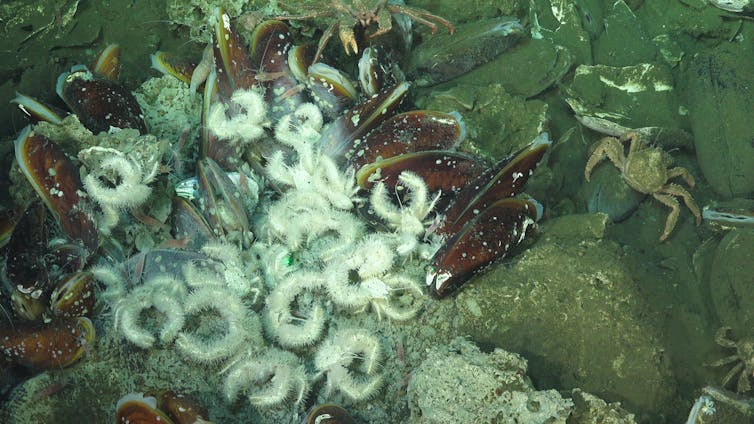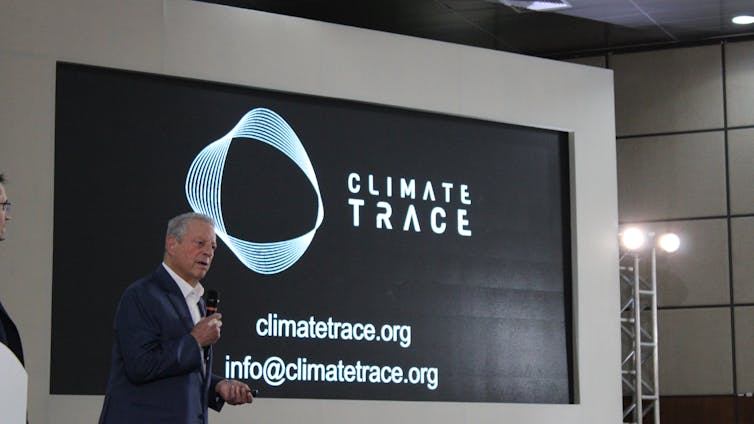Source: The Conversation – Canada – By George S. Rigakos, Professor of the Political Economy of Policing, Carleton University
Baseball in Canada is thriving, from the grassroots to the professional level.
Recent Toronto Blue Jays viewership numbers have been extraordinary, youth participation continues to climb, elite player showcasing and recruiting is expanding — and a new 19U national championship has just been announced by Baseball Canada.
When I’m not researching or writing about policing and security — an area requiring reflection about the interplay of structures, power and bureaucracy — I devote my energies to doing my small part to help the state of baseball in Canada, both as general manager of the Carleton Ravens baseball team and as a researcher.
I helped found the Ottawa chapter of the Society for American Baseball Research, co-authored a peer-reviewed article for the Baseball Research Journal and have reflected on the state Canadian university baseball for the Canadian Baseball Network.
My research and experience points to an an unavoidable conclusion: university baseball in Canada is shaped less by a lack of interest than by a series of persistent organizational barriers.
Formal recognition lacking
To start, outside Ontario, no major university sport body formally recognizes baseball.
University teams in Atlantic and Western Canada operate only because coaches and students organize their own schedules, pay their own way and operate outside the formal sport-administration structure that supports varsity teams. The notable exception is the UBC Thunderbirds, who play in the U.S.-based National Association of Intercollegiate Athletics.
The bodies overseeing university sport in Western Canada, the Maritimes and Québec don’t sanction or host university baseball in any capacity.
A three-game season
While Ontario University Athletics (OUA) formally recognizes university baseball, the organization’s official university baseball schedule is woeful, consisting of three, maybe four games. Under the OUA structure, the only sanctioned competition is a single regional weekend in October, followed by an underwhelming two-game provincial championship for the four teams that win their regions. This represents the entire formal university baseball calendar in Ontario.
A team that doesn’t move past the regional stage, therefore, completes its entire OUA “season” in one weekend.
This would be extraordinary for any major sport, but it is especially remarkable in baseball: a game built around long schedules, repeat matchups and consequential sample sizes. The 20 or more games that teams actually do play in September and early October are not acknowledged by the OUA in any formal way.
There are no official standings, statistics, athlete profiles or an official league website. For most of the fall, university baseball effectively takes place outside the provincial athletic system.
Held together by volunteers
Because the OUA acknowledges only a small fraction of the schedule, coaches organize every game, secure fields, arrange umpires, co-ordinate travel and compile statistics that are published by yet another savvy volunteer.
Some programs receive modest institutional support; most rely on player fees. Some Ontario universities treat baseball as varsity sport while most classify it as a “club” or “varsity club.”
By contrast, for student athletes participating in the three other major Canadian sports — hockey, football and basketball — established provincial and national structures provide visibility, scheduling and predictable competitive pathways.
Baseball’s exclusion from the varsity system in Ontario and its complete absence from university athletics bodies in the remainder of the country simply does not square with fan interest and participation.
Despite its tremendous popularity, baseball has been treated as the odd man out.
Baseball athlete exodus
This structural absence contributes to the large number of athletes who leave the country to pursue collegiate competition. According to data compiled by the Canadian Baseball Network for 2025, 1,187 Canadian baseball players are currently competing at U.S. colleges across NCAA, NAIA and junior college levels.
To put this into some perspective, Canadian collegiate baseball rosters typically carry about 25 to 30 athletes. The Canadians now playing south of the border therefore represent approximately 45 fully rostered university and college baseball teams.
Even if only a small fraction of these players remained in Canada, it would dramatically expand the competitive landscape and provide enough depth for a robust college and university system. As I wrote this article, there were only 26 recognized university programs competing in Canada.
The cost of this exodus is not merely athletic. Canadian colleges and universities are currently facing a serious financial crisis.
Assuming an average annual undergraduate tuition of $7,573 per year, the Canadian student-athletes now playing baseball at U.S. colleges represent up to $36 million dollars in foregone four-year domestic tuition revenue alone.
This is not simply a story of elite prospects seeking professional opportunities. Many players leave because there is no structured, visible or reliable university baseball pathway at home.
A dead zone
Even so, the experience of university baseball is meaningful to those who play.
Coaches, managers and other volunteers record results, manage schedules and transform the fall season into consequential competition, counting the results toward qualification for a grassroots championship involving teams from Ontario, Québec and the Maritimes.
The broader problem is institutional. Public interest is high, youth development is strong and the talent exists in abundance. University baseball in Canada is active, committed and culturally meaningful — but left outside the structures that ordinarily support and sustain collective achievement, it struggles to thrive.
In sociological terms, it operates in a state once described by the late, great social anthropologist David Graeber: a “dead zone.”
For Graeber, a “dead zone” is fostered when a system creates obstacles that frustrate and silence people, effectively making them unseen. Often these zones operate outside formal rules, and are dependent on unpaid labour. As a consequence, they’re prone to crises and collapse.
How could this change?
Despite the apparent fragility of the current system, change would be neither complicated nor costly. Indeed, as we have noted, a “rogue” national championship already exists.
In late October, coaches from Ontario, Québec, New Brunswick, Prince Edward Island and Nova Scotia organize their own Canadian “national” tournament, selecting teams, setting the schedule and administering the entire event.
Teams from Alberta and B.C. compete in the Canadian College Baseball Conference with a different calendar. A fuller national tournament — a “Canadian University World Series” — could incorporate these teams, even by using final placement from the previous year as a qualifier if necessary.
In a 2019 research paper, statistics student Mitchell Thompson and I explored the utility of a simple mathematical model used in NCAA baseball to determine “at-large” qualifiers and seeding for their College World Series.
We examined how useful the NCAA’s Ratings Percentage Index (RPI) would be for a potential Canadian University World Series, which would see teams across Canada compete for a national championship.
Nothing, of course, beats head-to-head qualifiers but most programs currently lack the resources for athletes and staff to travel on short notice. Any viable system will therefore have to respect limits of time, distance and funding.
But what’s missing is not data, talent or competitive interest. It’s a willingness by provincial sport organizations, Baseball Canada and, most importantly, universities to build and resource a structure that addresses their shared constraints.
At this point, even modest institutional co-ordination would move university baseball out of its current dead zone and into a system where student-athletes could be seen, recognized and supported.
![]()
George S. Rigakos is affiliated with the Carleton University Ravens baseball team but writes here as an independent researcher. His views are his own and do not represent Carleton University or Carleton University Athletics.
– ref. Baseball in Canada is thriving — but not on campus – https://theconversation.com/baseball-in-canada-is-thriving-but-not-on-campus-269785








